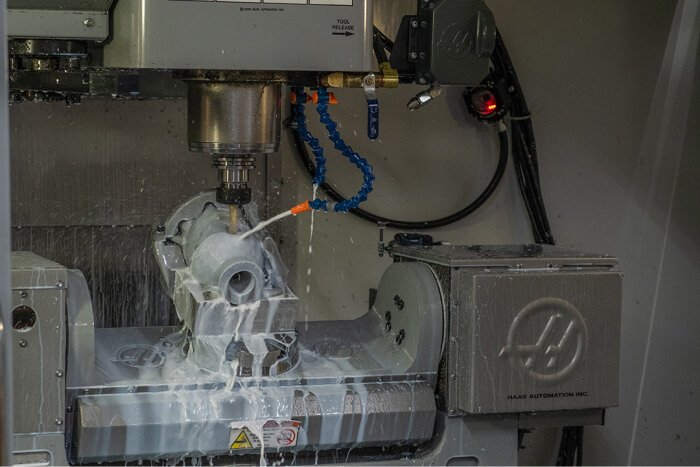CNC machining has a lot going for it. It's accurate, fast, and works well with a variety of plastic and metal materials. Increasing the number of axes in which a mill operates can significantly reduce the time it takes to manufacture parts. That's where 3+2 machining, (aka near-five-axis positioning) comes in.
Adding the ability to rotate parts that are mounted into a fixture improves a mill's access to cutting surfaces. From the manufacturer's view, 3+2 machining is much less expensive than full-on 5-axis, which translates into lower part pricing for you. There's also two-axis machining, which can mill along the x- and y- axes, and thus can mill in two direction, left/right or up/down.
What is 3+2 Machining?
With the most basic mills, every time you need to mill a new surface, the part must be removed and fixtured again to provide the cutter access to the surface. That additional human intervention is time-consuming, to say the least. 3+2 machining adds rotational axes to the manufacturing process. These allow for the fixtured material to be rotated on the A and C axes so the mill can continue working on the X, Y, and Z axes, per usual. The advantages can't be understated:
Efficiency
- As mentioned, 3+2 allows for fewer setups, meaning faster turnaround times.
- More accurate cutting locations allows for faster machining speeds with shorter, more rigid tooling.
- Shorter toolpaths provide enhanced access to more complex geometries.
Accuracy
- It all comes down to setups. If you don't have to re-fixture a part to get to a particular spot, you have the potential for tighter tolerances and greater accuracy. Human intervention in the milling process via setups always introduces the possibility of errors.
Lower costs
- Not to sound like a broken record but fewer setups also mean the machining technician won't have to tweak the positioning of your part. Less mill time means lower part costs, too.
- More accurate cutting also yields less material waste and fewer parts needing work.
Higher part complexity
Any time you improve an endmill's accessibility, you can more precisely point it at its target. To that end, 3+2 milling improves the accuracy of complex parts, especially as compared to 3-axis mills.

Applications for 3+2 Machining
This machining process is a go-to for things such as complex housings and parts with angled features. Injection molding, for example, takes advantage of 3+2's strengths to accurately machine the molds that make parts.
3+2 vs. 5-Axis CNC Machining
For most parts, 3+2 machining will do that job without any issues, but sometimes you have parts that have more complex geometries. That's when 5-axis shines. Here is a quick comparison of the two:
3+2 axis
- More affordable.
- Programming is easier.
- Works well when machining multiple slides, but not all sides.
5-axis
- Capable of machining very complex shapes, sometimes rivaling 3D printing for achieving extreme geometries.
- Faster machining times are possible thanks to continuous toolpath control.
- Multiple setups are generally unnecessary.
Design Considerations for 3+2 Machining
For most parts, 3+2 machining can do that job for you with speed and accuracy. Our Design for Machining Toolkit is a great resource for all things machining with Protolabs and can quickly get you up to speed on what you need to know to use Protolabs CNC machining service.

If you have any issues getting your guide, download here.









